Be Our Guest
Design Insider takes a look at key trends driving guestroom design in 2016
The UK hospitality industry enjoyed some of the highest occupancy rates during 2015. With increased investment across chain scales and consolidation of big brands, we take a look at key trends affecting guestroom design in 2016:
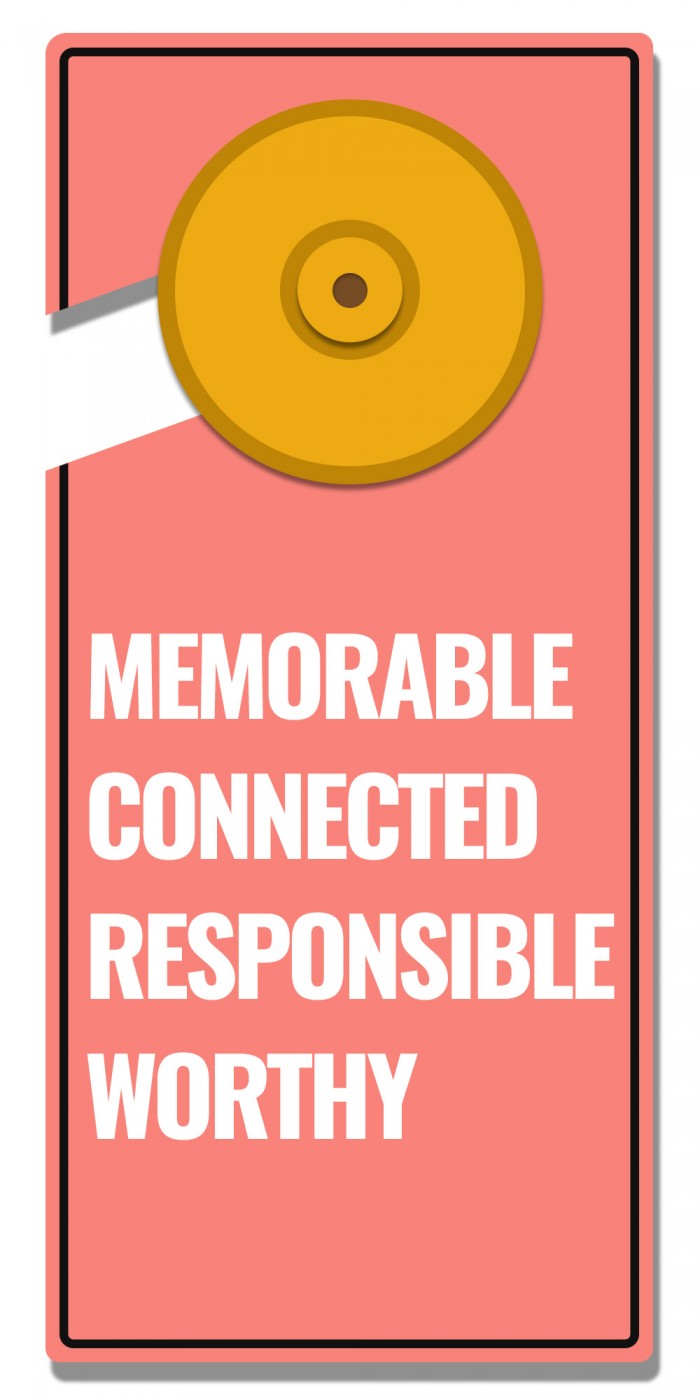
Memorable – attention to detail creates experiences that can’t be forgotten
Connected – relating to your locality, your guests and their shared global network
Responsible – considering the wellbeing of your guests as well as the environment
Worthy – being beautiful, functional and fit for purpose to deliver true value
We spoke with some of our members to hear their views and see how these trends resonate with them.
Elegant Clutter has seen the role of art evolve in guestrooms, Oliver Griffin Commercial Manager explains, ‘for many people, experiences and environment are almost more important than tangible belongings. This translates directly to their requirements from a hotel room. Clients want a luxury boutique feel in even a mainstream hotel. As a consequence, greater focus is placed by designers on the subtler sides of the design scheme. Which has been good for Elegant Clutter.’
“Clients want a luxury boutique feel in even a mainstream hotel.”
Framed art is here to stay, but increasingly art can be anything – it can be a ceiling feature, a wall texture, a screen divider or a unique bespoke printed waterproof bathroom panel. Designers are open to more adventurous materials such as resins. Elegant Clutter’s expertise in new materials and techniques mean they are able to reverse engineer a designer’s vision into the most challenging of budgets. Artwork is more considered and mostly site specific, researched and designed to tell the story of the location.
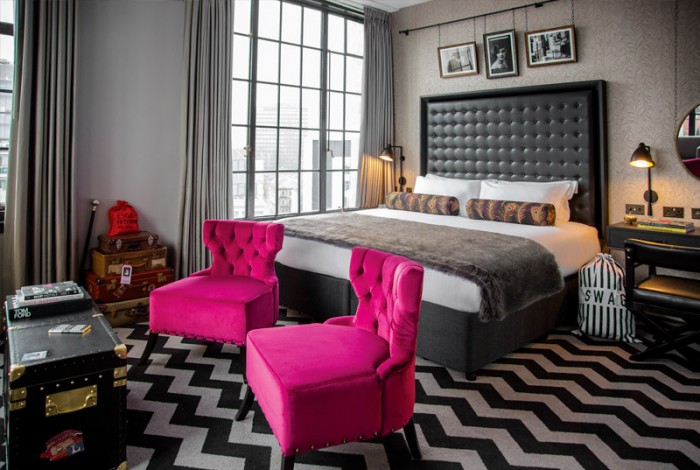
Digital wallcoverings have become more popular as a feature wall, as well as unusual and innovative ways of hanging or displaying the artwork. Harry Pass, Creative Director at Elegant Clutter believes that we will see more 3D elements, he explains how, ‘additional layering and playing with depth and shadow promises an exciting and inspiring future landscape for designers’.
It’s clear that beautiful, functional and fit for purpose interiors are redefining contract interiors. But the biggest change Style Library Contracts has seen is products previously deemed as three-star in rating are now used in five-star accommodation, primarily to reduce costs. This has meant the clients want a high end look but at a budget price.
Carolyn Mitchell, Group Contracts Sales Director at Style Library Contracts discusses the impact, ‘maintaining the balance is delicate as managing expectation is vital at all levels of the design process. If function is the key driver, and budget is a problem, then commodity product is still not enough, beautiful design led commodity is what is required to deliver the brief. At the same time, we have noticed a move away from cookie cutting branding concepts, hotels are being designed with the locality in mind, and individual concepts are being created to not only to their brand standards but also to make the scheme special and unique.’
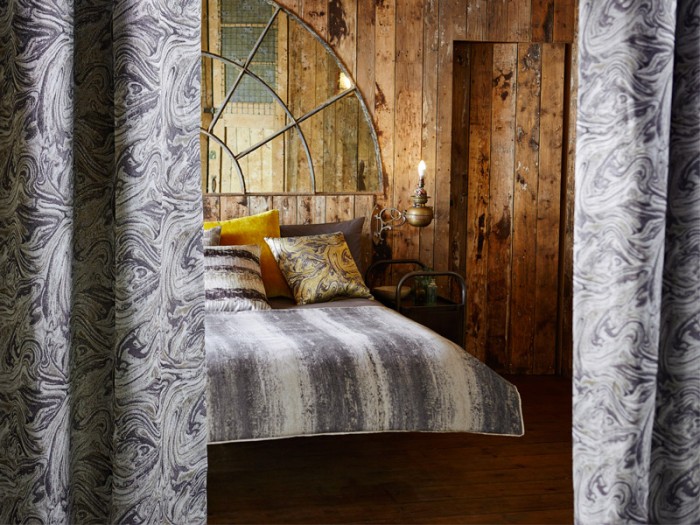
Style Library Contracts believe that fabric and wallpaper has to earn its place in the scheme, as it is more than just a functional commodity. Designers are becoming more ambitious and creative with their design briefs, so special productions are a growing requirement. As technology develops with digital printing for fabrics and wallpaper, it is possible to create stylish, practical and durable products, so class their Anthology fabrics library as ‘essential luxury’ and see it redefining contract interiors.
Mark Poulain, Global Specification Manager for Roca, shared his thoughts on key trends in hotel bathrooms for 2016, ‘for high-end hotels in particular, tech is key, with quick check-in, payment and engagement on social media the norm for modern guests. In the bathroom, this is demonstrated through infrared flushing and WCs that incorporate bidet functions. Tech also combines with another trend; wellness. Energising lighting, air purification, spa showers and baths, are all necessary accessories to travellers looking for a ‘holistic’ hotel experience.’
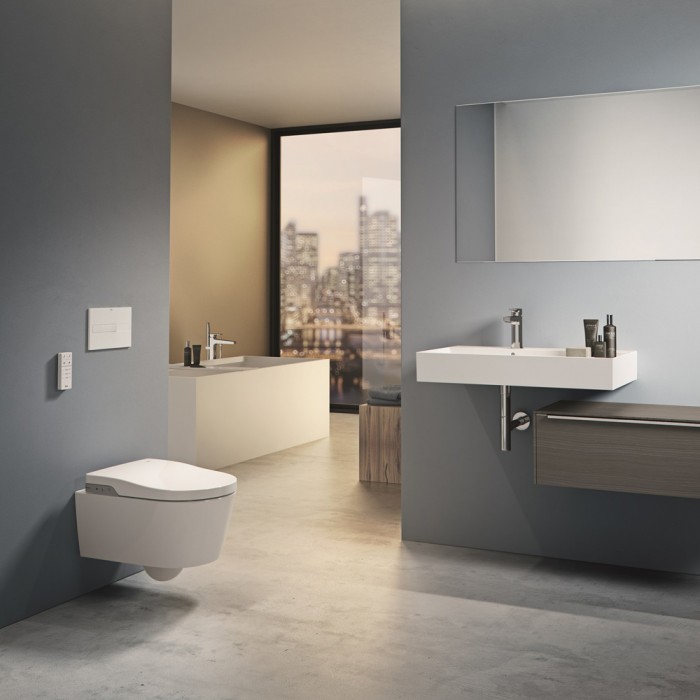
Sustainability is a key issue, as a massive water user, the bathroom can be an important place for hotels to demonstrate their environmental approach, providing a visual point of reference for customers looking for carbon cutting ways to travel. Water saving taps and showers, dual flush and even grey water recycling WCs will score brownie points and save on bills – particularly for those hotels on a water meter. Sustainability can also be interpreted as longevity, choosing products that will go the distance in terms of function and style. Solid floors and surfaces are critical, with quality tiles and even bespoke units made from stone-based composites to create a seamless, sleek and robust finish.
DESIGN INSIDER also notes lighting playing an integral role in design. Heathfield & Co has universally seen the growing adoption of more environmental lighting, primarily through the use of LEDs. One of the most significant changes for guest room interiors is the blurred division between hospitality and residential design. Residential spaces are incorporating design cues from high-end hotel schemes whilst hospitality interiors are creating more intimate spaces, yet still maintaining a highly luxurious feel.
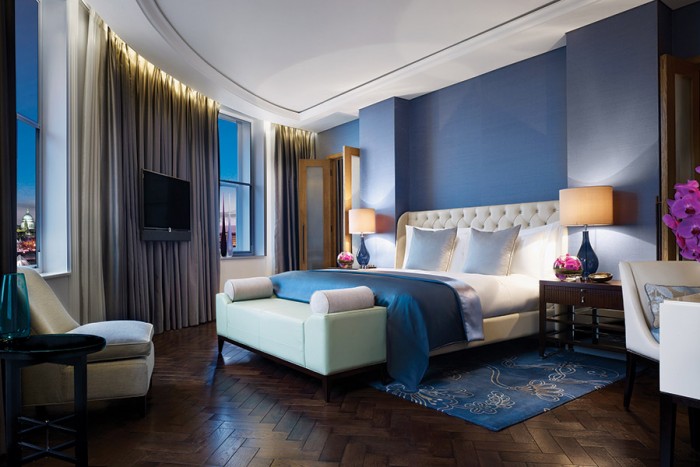
Chris Fiander, Marketing Manager at Heathfield & Co explains the need for differentiation in design, ‘an increasing number of guest rooms and other hospitality interiors are utilising bespoke lighting designs. This is enabling the creation of fully unique pieces that are perfectly attuned to their surrounding spaces, often referencing the architecture, heritage, or contemporary influences of the venue. A number of finish and colour options have shown widespread popularity within the hospitality industry. Muted, elegant pinks and blues have featured prominently, a trend that is reflected in our own current Signature lighting collection. We also continue to draw design inspiration from the fields of fashion and jewellery which are currently making effective use of warm metallics with vivid highlight tones.’
But, the ultimate measure of success of any guestroom has to be how good your night’s sleep was, Chris Ward, Marketing Director at Hypnos, reflects on how the Hypnos brand has an authoritative position on the topic of sleep within the hospitality industry.
‘Hypnos’ defining factors are quality, luxury and the pursuit of perfection within the craft of bed making. We’re dedicated to ensuring our hotelier’s guests receive the most comfortable sleep possible from a Hypnos bed. These core values are at the heart of our brand and have become synonymous with the Hypnos name, which in turn has helped us to become recognised experts on sleep.
“Consumers are also becoming more educated about sleep and we know that guests expect much more from their hotel rooms and hotel beds.”
‘Consumers are also becoming more educated about sleep and we know that guests expect much more from their hotel rooms and hotel beds. They need to be stylish, design-led and most importantly, supremely comfortable and sumptuous, as consumers want to ensure they have a great night’s sleep. As such, the bed supplier a hotelier chooses has become a key factor in the customer journey. As Hypnos is a trusted brand and name both in the hospitality industry and by consumers, Hypnos is able to fulfil this demand, ensuring hoteliers can be confident in their choice of bed and consumers can be confident they’ll get a great night’s sleep.’
It’s always useful to catch up with our members and hear their views, and how they relate to the key trends we see in 2016 – being Memorable, Connected, Responsible and Worthy.
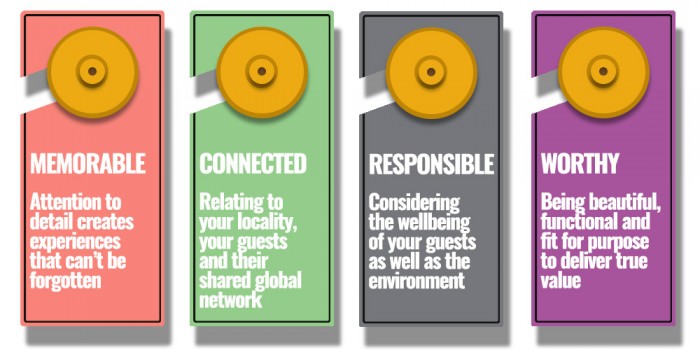





Comments
many thanks for Hypnos mention in you hotel write up its good to see Premier Inn has realised that at last hotel guests spend MOST of their time in bed !!!!! not the bathroom